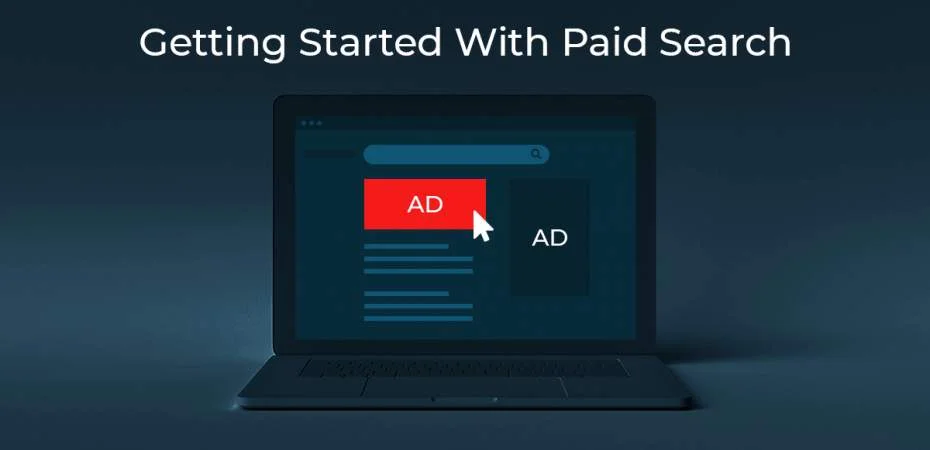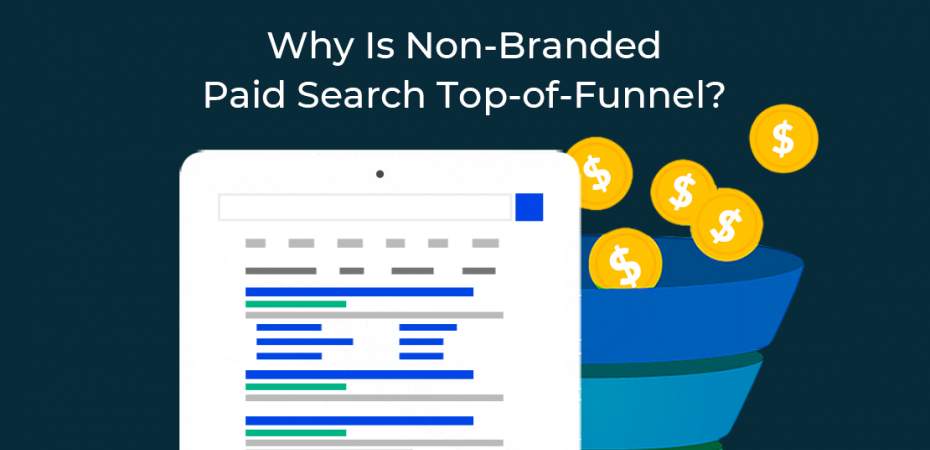January 10, 2020
| Article | Advertising
Paid Media Glossary for Beginners
With various channels, ad types, targeting abilities, and performance metrics, Paid Media can be confusing. So if you are a novice who is just starting out or a pro who needs a refresher, here is a cheat sheet of some of the most used definitions in paid media today. Note that many of these definitions apply to all media types as well.
Three Main Paid Media Channels
Paid Search/PPC
Ads shown within search engine results in which advertisers pay each time a user clicks the ad. Cost per click is determined by the advertiser’s quality score, the competitiveness of the keyword that generates the click, and the industry. Google and Bing are the largest search platforms in terms of traffic and advertising dollars.
Paid Social
Ads on social media platforms such as Facebook, Instagram, Snapchat, Pinterest, and others.
Display
Banners and other ad types that can leverage text, images, videos, and audio to advertise. Demand-Side Platforms (DSPs) generate most of the business programmatically.
Performance Definitions
Cost Per Action (CPA)
A model for calculating the total cost of all actions (e.g., conversions or leads) visitors took on your page. This is a method used for determining return on ad spend or return on investment (ROI). The cost of most actions will be calculated based on either the Cost Per Acquisition or Cost Per Lead.
Actions calculated based on Cost Per Acquisition are typically those that drive sales or actions further down the funnel.
Actions calculated based on Cost Per Lead are typically those that are used to gather a visitor’s information, which is then used to close a sale (think lead form).
Both CPA and CPL are calculated by taking the total spend of your campaign and dividing it by the total number of actions taken.
CPA Example: You spend $1000 to acquire 10 sales. Your CPA is $100. $1000/10 = $100
CPL Example: It takes 10 clicks to get a lead. If each click costs $2 your CPL is $20. 10 x $2 = $20. You could also use your CPL to figure out your CPA. If it takes 5 leads to get a conversion and each lead costs $20, then your CPA is $100. $20 x 5 = $100 cost per action.
Cost Per Click (CPC)
The cost you pay every time one of your ads is clicked. CPC is usually associated with your pay-per-click campaign or display banners. Several factors go into calculating CPCs including your quality score, the competitiveness of your industry, and the search term that led to your click.
Click Through Rate (CTR)
The percentage of clicks your ad generates based on the number of times your ad is shown. The higher the click through rate, the higher the quality score your ad will have, which improves your ad position and lowers your CPC.
Click through Rates can be calculated as such. Your ad is shown 1000 times and is clicked on 100 times, your clickthrough rate is 10%. 1000/100 = 10.
Conversion Rate (CVR)
The percentage of conversions generated or goals completed based on the number of visitors to your website. If 1,000 people visit your site and 100 converted on a goal, then your conversion rate is 10%. 1000/100 = 10%
Customer Lifetime Value (CLTV)
How much revenue you can expect the average customer to generate over the lifetime of their business dealings. This metric helps you determine how much you should spend to acquire a customer.
Average Purchase Value
The average dollar value of purchases on your website. To get this number, divide the total revenue by the total amount or orders.
Average Purchase Frequency Rate
How often a customer purchases from your site. To get this number, divide the total number of purchases by the total number of customers.
Customer Value
How much the average customer spends. You can get this number by dividing the Average Purchase Value by the Average Purchase Frequency Rate.
Clicks
How many times your links or ads are clicked on by a user.
Cost Per Mille/Thousand (CPM)
The price an advertiser must pay for every thousand ad impressions.
Cart Abandonment Rate
The percentage of users who reach the shopping cart but leave the site without purchasing. A high abandonment rate can signal a complicated checkout process or poor UX on the site.
Pageviews
How many times a page on your website is visited.
Bounce Rate
The percentage of visitors who enter your site and then leave (bounce) rather than continuing to view multiple pages. A good bounce rate lies between 20% and 40%.
Video View Rate
The percentage of users who actually viewed your video for more than 3 seconds. This metric shows how engaging your videos are to viewers.
Conversion Tracking and Attribution Definitions
Attribution
Identifying and tracking actions across multiple screens and touchpoints that contributed to the desired action/conversion.
Click Through Conversion
A conversion that occurs after someone clicks on your ad.
View-Through Conversion
A conversion that occurs after someone views your ad, but doesn’t click on it.
Lookback Window
The length of time after an ad is clicked or viewed that an ad can be credited with a conversion.
Google Tag Manager (GTM)
A management tool that allows you to place marketing tags on your site without altering any code in your CMS.
UTM Parameters
Tags that are added to the URL when a link/ad is clicked and can be tracked in Google Analytics. The tags allow you to track individual posts, tweets, blogs, etc. instead of tracking the general referral source. It aids in helping determine the effectiveness of a specific post/ad. UTM stands for Urchin Tracking Module (the format Google uses to track unique URLs).
Targeting and Strategy Definitions
Remarketing/Retargeting
When a marketer utilizes a list of users who have previously engaged with their site or business to target them again with some form of advertising. The two terms have become interchangeable, but the main difference is the strategy. Retargeting usually refers to serving ads to cookie-based audiences who have engaged with your site, while remarketing uses email via CRM lists. These email lists are generated via your CRM database targeting email addresses or other customer information. This helps re-engage users who have shown interest in your brand/product but have not yet converted, or can help drive customer loyalty.
Prospecting
Targeting new users who have not previously engaged with your brand or site. Typically this involves identifying your target market and their attributes to narrow your marketing efforts for the best chance of reaching an audience that is likely to convert.
Lookalike Targeting
Targeting people whose digital profiles are similar to that of your existing customers and site visitors. This strategy would fall under a prospecting campaign.
Conquesting Campaign
Targeting a competitor’s audience by bidding on their brand terms, targeting fans of their social media pages or targeting users’ mobile devices who have entered their brick and mortar location.
Remarketing List for Search Ads (RLSA)
Allows you to target either a site visitor or a customer from a CRM list who is searching for a keyword you are bidding on.
Conversion Rate Optimization (CRO)
When minimal changes are A/B tested against two variations of a webpage in hopes of converting more visitors on the site.
Call to Action (CTA)
A statement or prompt used to compel immediate action from a visitor. A good call to action can increase engagement and conversion rates. CTAs are found on your ads, landing pages, and website pages.
Landing Page
A page that has a defined Call to Action that will convert visitors into leads. This page can be found on the website or it can be a separate page that drives visitors to your website or into the sales funnel.
Basic Ad Types
Text Ads
Advertisements containing words rather than images. Typically found on SERPs, but can also be found in Display ads.
Banner Ads
Image-based ads hosted on various websites within an ad server’s network. The ads are meant to drive traffic from a host site to the advertiser’s website or landing page.
HTML5 Ads
Responsive ads that adapt to any browser, operating system, or device. Allows content to be animated and interactive.
Dynamic Ads
Ads that dynamically change to adapt to each customer’s specific journey. Many ad creatives can pull in product details from a product feed or page. Example: You visit a website and look at black Nike Shoes. The next dynamic ad you see will automatically include the same shoe you looked up previously, hence raising the likelihood of you converting.
Connected TV Ads
Video or display ads served on over-the-top (OTT) devices, smart TV apps, and gaming consoles connected to the internet where users can access content beyond what is available via normal cable offerings (Think Hulu, Roku, etc.). This form of advertisement is an effective way to reach “cord-cutters” who no longer see traditional commercials on television.

